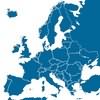One surprising development this summer is the international vogue for shutting down nuclear plants. Germany led the way in the spring — startling even its own industry leaders — after the disaster at Fukushima. Since then Switzerland, Italy, Taiwan, and Japan have either started serious debates or actively resolved to forego nuclear power in the next decade or two.
In Italy the decision was passive, in favor of a status quo: Voters turned out in June to reject Silvio Berlusconi’s plan to revive an old nuclear program. But the sentiment, in every case, was driven by the Fukushima crisis, which still hasn’t ended.
The developed world still needs nuclear power, at least for now. The German phase-out — which I’m in favor of — is highly experimental, and the ambition to end nuclear power by about 2022 would be impossible for Berlin to contemplate if many terawatts of current weren’t being reliably produced by reactors in next-door France.
The plan will also set Germany back on its haunches: Its grid will have to rely more heavily on coal and natural gas until renewable energies are strong enough to run the planet’s fourth-largest industrial nation. The statistics look so daunting that it’s hard to believe any country (besides Japan) would even discuss shutting down its nuclear plants. But Fukushima sent a powerful shudder through voters as well as politicians.
Chancellor Angela Merkel hopes that by 2022 Germany won’t need French nuclear current or extra coal to meet demand. Her dream (she says) is to make Germany so energy-efficient and green that it becomes a model for everyone else. Her government wants Germans to demonstrate just how to move beyond old fuel sources, whether coal or atomic fission.
It probably won’t work as planned. Even if Germans pull together to make their “energy revolution” real, they’ll probably spend a great deal of money, miss their self-imposed deadlines, grumble about mounting energy prices and burn too much coal. That would be nothing new for Germany. The reason for optimism is that this phase-out plan — unlike an earlier plan — arrived with a kick in the pants to German industry.
The national rail service, Deutsche Bahn, is frantically searching for a way to run its trains on wind, hydroelectric and solar energy. Berlin passed its first nuclear phase-out law in 2001, but it’s only since the earthquake and tsunami in Japan that Deutsche Bahn has been serious about mixing more renewable sources into its (enormous) daily load.

Michael Scott Moore complements his standing feature in Miller-McCune magazine with frequent posts on the policy challenges and solutions popping up on the other side of the pond.
“Since Fukushima, Deutsche Bahn has been moving in the right direction,” Peter Ahmels, an energy expert at the German Environmental Aid Association, told Reuters. “There’s clearly a new thinking on the board. They’re doing sensible things. Before, they resisted. The argument was that renewables were not their core business.”
Now the rail system wants to boost its share of renewable energy use from 20 percent today to 28 percent by 2014 — and wean itself from CO2-emitting fuels completely by 2050. “That’s not just a declaration of intent,” Hans-Jürgen Witschke, head of the energy-supply group Deutsche Bahn Energie, said to Reuters. “It’s a concrete business target.”
These efforts will repeat themselves throughout German industry if the country intends to move beyond nuclear power in a responsible way after 2022. Merkel has already promised a lot more money for energy research, since her goal may be impossible without a number of technological advances.
No doubt the results will be messier than the dream. No doubt Merkel wants to win votes in a nation notoriously opposed to nuclear power. But where else in the world do industry, government and the public look so mobilized? Japan, perhaps, out of horror. Not Taiwan. Certainly not Italy. The sensible Swiss have given themselves an extra dozen years of breathing room before their nuclear darkness — but then they might have to rely on the Germans for new technology since they don’t have the same big research base.
America?
Sign up for the free Miller-McCune.com e-newsletter.
“Like” Miller-McCune on Facebook.
Follow Miller-McCune on Twitter.
Add Miller-McCune.com news to your site.





